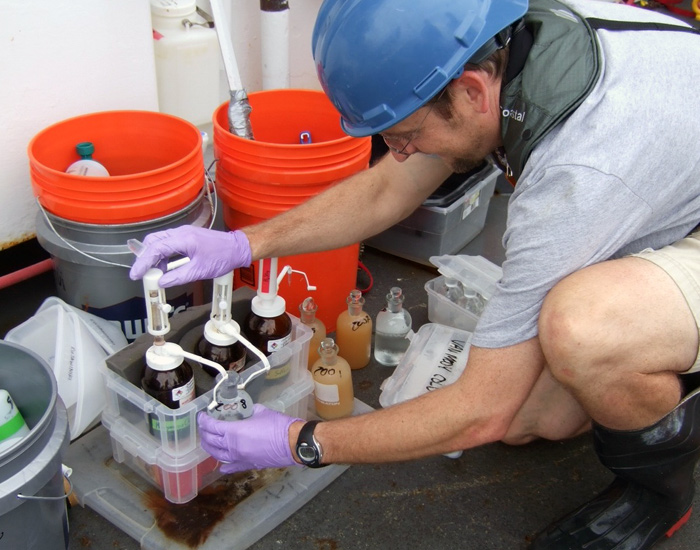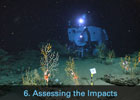Dead Zones and Microbial Response to Oil
Deepwater Horizon, 2010
Principle Investigator: Ben Van Mooy
Early media reports from the Gulf after the flow of oil began warned of massive patches of low-oxygen water forming in areas where microbes were thriving, consuming dissolved oxygen in the process. This posed potentially serious threats to Gulf fisheries, but WHOI chemist Ben Van Mooy, realizing the significance of these predictions, quickly mobilized with his colleagues to investigate.
With support from NSF’s Rapid Response Program, Van Mooy set out to assess the response of the microbes in the Gulf to the oil spill, by tracking the oxygen consumed by microbes in the course of degrading the oil. He initially planned to look for signs of microbial respiration in the surface oil slick, but because he was sharing space on the cruise with colleagues who were studying the spread of oil in the underwater plume, he expanded his search there, as well.
He also took great pains to ensure the accuracy of his analysis by employing a time-consuming but proven method for measuring oxygen in the water known as a Winkler titration. He found that, contrary to expectations, oxygen levels underwater were not abnormally low, allowing fishermen and Gulf residents to focus on other concerns. In the surface waters, he found that the microbes were consuming oil at an amazing rate, and that microbial degradation was therefore a process with the potential to remove a significant fraction from the spill.
Related Multimedia
Science in a Time of Crisis, Chapter 6: Assessing the Impacts
WHOI's Response to the Deepwater Horizon Oil Spill

